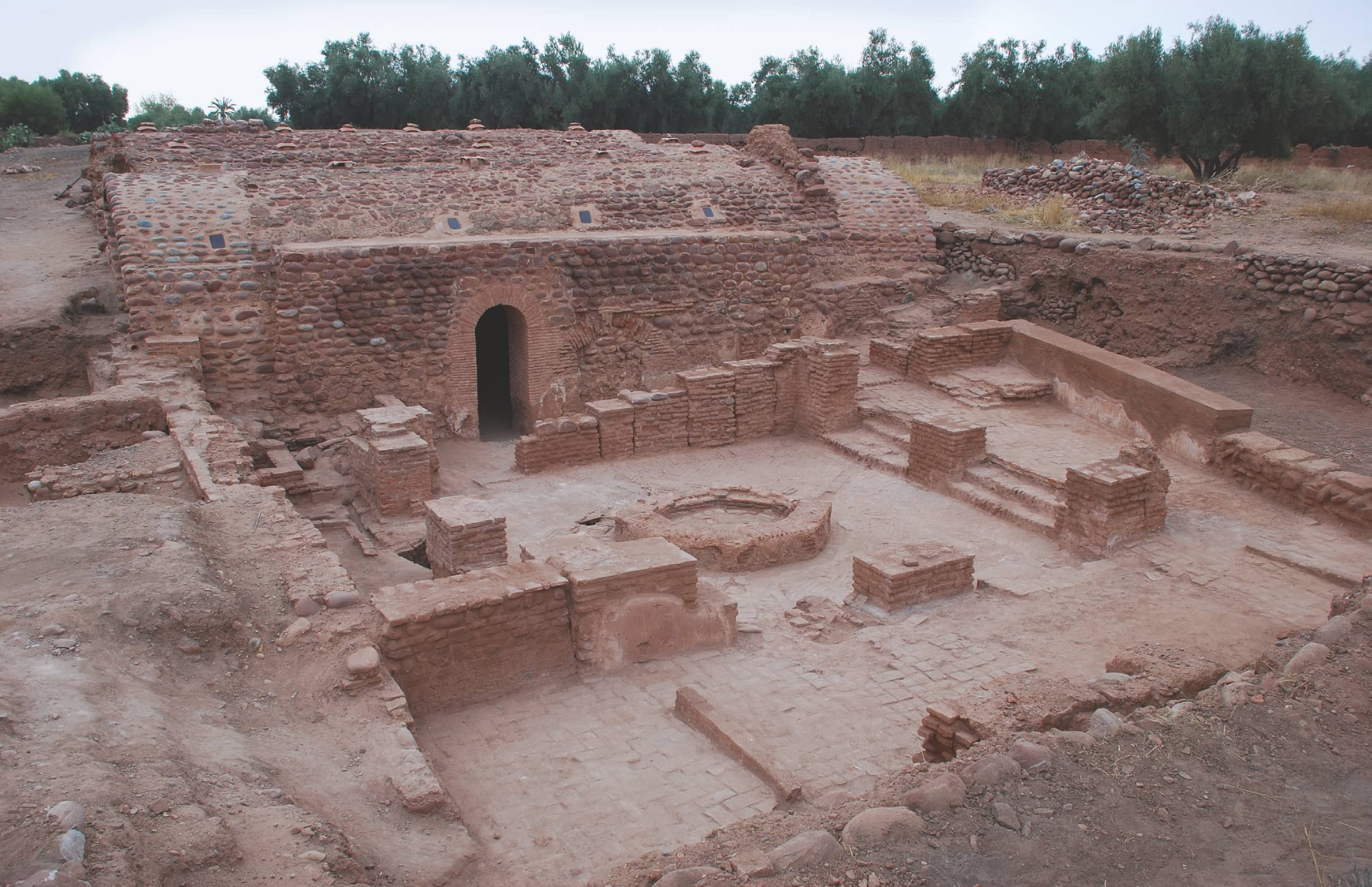
Fifteen years ago, retired archaeologist Ronald Messier, who had spent much of his career excavating the site of Sijilmasa on the northern edge of the Sahara, got a phone call from Frederick Vreeland, a former American ambassador to Morocco and the son of the fashion editor and columnist Diana Vreeland. Vreeland, who was also retired and lived on an estate just south of the bustling city of Marrakech, asked Messier to come and take a look at some nearby ruins that locals called the hammam, the Arabic word for bathhouse. Vreeland was concerned that something important might be slipping away from decay and neglect at the dilapidated site next to a slaughterhouse on the outskirts of the modern village of Ghmat.
Messier visited the site a few days later, and, after just a few minutes of inspecting the tops of three well-worn stone and brick domes poking out of the red soil amid the trash, was convinced it was, indeed, important. “I could tell from the pottery sherds scattered about that the remains went back to the Middle Ages,” says Messier, a professor emeritus at Middle Tennessee State University. “I knew that this was likely the ruins of medieval Aghmat.” The location of Aghmat, which is partially encircled by the foothills of the High Atlas Mountains, was not a mystery. From the ninth through the fourteenth centuries, the city was a key trans-Saharan trading hub. It is well-known from contemporaneous texts and is even noted on a few modern maps. But while many travelers over the centuries had sketched the ruins, and the site was partially surveyed by French archaeologists in the 1990s, it had never been excavated.
Denne historien er fra May/June 2020-utgaven av Archaeology.
Start din 7-dagers gratis prøveperiode på Magzter GOLD for å få tilgang til tusenvis av utvalgte premiumhistorier og 9000+ magasiner og aviser.
Allerede abonnent ? Logg på
Denne historien er fra May/June 2020-utgaven av Archaeology.
Start din 7-dagers gratis prøveperiode på Magzter GOLD for å få tilgang til tusenvis av utvalgte premiumhistorier og 9000+ magasiner og aviser.
Allerede abonnent? Logg på
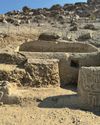
ORIGINS OF PERUVIAN RELIGION
While investigating looters' holes at the site of La Otra Banda in northern Peru's Zaña Valley, archaeologist Luis A. Muro Ynoñán of the Field Museum and the Pontifical Catholic University of Peru spotted carved blocks around seven feet below the surface.
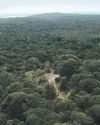
ISLAND OF FREEDOM
Many of the enslaved Africans sent to Brazil beginning in 1549 were from what is now Angola, where one of the most widely spoken languages was Kimbundu.
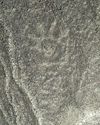
NAZCA GHOST GLYPHS
From the 1940s to the early 2000s, geoglyphs were discovered in the Nazca Desert of southern Peru depicting animals, humans, and other figures at the rate of 1.5 per year.

COLONIAL COMPANIONS
The ancestry of dogs in seventeenth-century Jamestown offers a window into social dynamics between Indigenous people and early colonists.
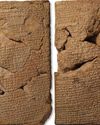
BAD MOON RISING
The British Museum houses around 130,000 clay tablets from ancient Mesopotamia written in cuneiform script between 3200 B.C. and the first century A.D.
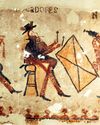
DANCING DAYS OF THE MAYA
In the mountains of Guatemala, murals depict elaborate performances combining Catholic and Indigenous traditions
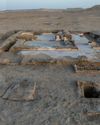
LOST GREEK TRAGEDIES REVIVED
How a scholar discovered passages from a great Athenian playwright on a discarded papyrus

Medieval England's Coveted Cargo
Archaeologists dive on a ship laden with marble bound for the kingdom's grandest cathedrals
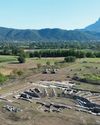
Unearthing a Forgotten Roman Town
A stretch of Italian farmland concealed one of the small cities that powered the empire
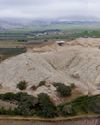
TOP 10 DISCOVERIES OF 2024
ARCHAEOLOGY magazine reveals the year's most exciting finds